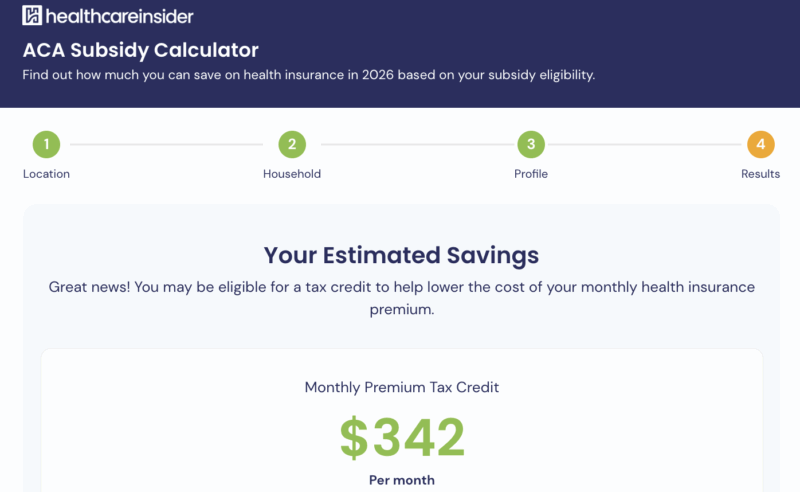
Written by Erica Block
Reviewed by Ronnell Nolan
Expert Reviewer
We want to help you make educated healthcare decisions. While this post may have links to lead generation forms, this won’t influence our writing. We adhere to strict editorial standards to provide the most accurate and unbiased information.
Under Obamacare (Affordable Care Act), women were granted more breastfeeding health insurance benefits. They’ll likely stay under the new legislation. Here’s what is and isn’t normally covered under your plan.
Breast milk might be free, but good pumps don’t come cheap. Between the cost of bottles and milk storage bags, plus the tactical challenges of pumping at work, breastfeeding is more expensive than people think. There’s a lot that you probably don’t know about your breastfeeding health insurance benefits (if you even knew you had them).
Breastfeeding: What’s Covered? What Must Be Paid for Out-Of-Pocket?
It’s important for women to understand what, exactly, their health insurance plans are legally required to pay for when it comes to breastfeeding services and equipment. Barring exemptions for a small number of insurance plans which are “grandfathered-in,” health insurance companies are required under the Affordable Care Act (ACA), or Obamacare, to cover breastfeeding support and supplies without imposing cost-sharing measures such as deductibles, copayments, or coinsurance.
More granular coverage details vary from plan to plan; new parents and parents-to-be are advised to contact their health insurance provider for clarification – the National Women’s Law Center (NWLC) offers a helpful guide outlining questions to ask. For instance, some health insurance plans will only reimburse women for the cost of a manual pump – rather than an electric pump (which is more efficient and less labor-intensive than the manual pump). And while breast pumps are usually covered in full by insurance, the ACA doesn’t specify what kind of pump has to be covered.Plus many plans don’t pay for the cost of other pumping supplies, such as nursing bras, bottles, and milk storage bags.
A toolkit created by the NWLC called New Benefits for Breastfeeding Moms: Facts and Tools to Understand Your Coverage under the Health Care Law provides an in-depth, comprehensive guide to understanding your insurance coverage as it applies to breastfeeding. For a more general overview, refer to the chart below to determine which breastfeeding supplies and services are covered through your insurance plan:
What Breastfeeding Goods & Services Are Covered
Under My Health Insurance Plan?
| Good/Service | Is it covered? | Notes |
| Breast Pump | Yes, with zero copay. | The law doesn’t specify coverage of a certain type of pump. Check with your plan ahead of time to find out which types and brands are covered, or if there is a particular vendor you need to use in order to get one. And good luck finding a plan which covers the new “smart pump.” |
| Pumping Supplies (bottles, milk storage bags, nursing bras, tubing) | It depends. | While some plans – like TRICARE for military service members – cover the cost of pumping accessories, other plans don’t? For many women, these will be out-of-pocket expenses. |
| Lactation Counseling / Education | Yes. Certain plans require consultants to be in-network. | Counseling services must be covered for duration of breastfeeding. Insurers must share up-to-date information about breastfeeding counseling providers who participate in their plan networks. [Note: if a plan can’t provide counseling services in-network, your plan must allow you to obtain services from an out-of-network provider at no cost.] |
| Workplace Accommodations (sufficient break time, private space) | Yes | The break time afforded to women who need to pump may be unpaid; the private space can’t be a bathroom. |
| Milk Shipment and Transport Services | It depends. Check with your employer or plan provider. | Some employers offer milk shipment services through Milk Stork or FedEx. Ernst & Young has offered breast milk shipping for years, and last year, IBM, Accenture and Twitter added it. |
| Pasteurized Donor Milk | Rarely. Can be situation-dependent. | In several U.S. states, Medicaid will pay for donor milk from approved milk banks. |
Obamacare or Affordable Care Act Helped Working Moms Breastfeed
Data from the Centers for Disease Control and Protection (CDC) and recent studies published in the American Journal of Public Health show a correlation between the increase in breast pump accessibility and an increase in breastfeeding prevalence and duration rates among new parents in the United States. While those increased rates aren’t necessarily correlated with breast pump accessibility, these statistics do suggest that Americans benefited tremendously from ACA-mandated workplace protections and health insurance coverage of breastfeeding equipment and support services.
The implementation of ACA in 2013 made breastfeeding significantly more accessible and affordable for women in the US by requiring private health insurance plans to cover the cost of pumping equipment and support services such as lactation counseling. The law also made it a requirement for employers to provide breastfeeding employees with “reasonable break time” and private accommodations to pump milk during the workday.
Returning to Work While Nursing
A 2018 survey found that over 75% of expectant mothers planned to breastfeed at work. New devices have made pumping easier to manage than ever, and even more working mothers expect to breastfeed in the future.
Similarly, the survey found that a significant majority of mothers-to-be believed that their employer’s maternity plan would meet their needs, were comfortable using a breast pump on the job, and hadn’t had a negative interaction with a co-worker as a result of breastfeeding.
However, only half of the pregnant women surveyed had discussed their breastfeeding plans with a supervisor or HR before birth. To ensure a fully-stocked and private pump room, you may want to ask your HR representative to prepare.
Breastfeeding Health Insurance Benefits Expected to Stay in Future Legislation
Maternity care and support for nursing mothers have been a focus in the past in policy debates about the future of the Affordable Care Act (ACA) and Medicaid restructuring. GOP efforts to repeal-and-replace Obamacare had led many to wonder if health insurance benefits for breastfeeding were headed for the chopping block. Legal experts, however, believe the provisions of the ACA requiring health plans to offer breastfeeding support and equipment are safe for now (the same can’t be said of contraceptive coverage and other provisions affecting women’s health).
What if Insurance Companies Violate the Law?
While Obamacare’s (Affordable Care Act) coverage of breastfeeding equipment, support, and counseling was a groundbreaking insurance benefit, breastfeeding provisions under the ACA’s essential benefits requirement has not been consistently enforced. Two studies out of the NWLC found scores of cases in which insurance policies failed to comply with the ACA’s breastfeeding coverage requirements or restricted coverage in ways that undermine the intent of the law.
In other instances, as detailed in the report, “the federal guidance detailing coverage standards fall short of what women need to breastfeed successfully.” So, what can you do if your plan fails to comply with legally-mandated breastfeeding health insurance benefits? Let’s take a closer look at what to look out for.
Some insurance plans have put limits on coverage in violation of ACA provisions. Noncompliance took the following forms:
- Only covering lactation counseling within two months of delivery;
- Not covering a breast pump until after the baby is born; and
- Not allowing women to obtain breastfeeding services out-of-network without out-of-pocket costs when in-network services were not available.
And while not illegal, the report also found insurance companies complicating the ability of new parents to breastfeed in legally permissible, albeit ethically questionable, ways:
- Only covering the cheapest, inefficient manual pumps; and
- Including very few lactation consultants in their network, so as to be geographically inconvenient.
Solutions, Insurance Scorecards
Of course, if your baby is hungry, there is little time to wrangle with an insurer overpayment for a breast pump or a lactation consultant. But breastfeeding — and breast pumping — isn’t a luxury lifestyle choice. It’s a matter of women’s and children’s health. If you encounter roadblocks that impede your ability to take advantage of breastfeeding benefits included in your insurance policy, this guide includes scripts and advice to help consumers navigate a range of situations, or resolve any impasses with their health insurer. The National Breastfeeding Center’s Insurance Scorecard can also give plan holders an idea of what they can expect from their carrier.
In addition, the consumer division of your state’s Department of Insurance should also be able to help with any issue regarding an insurer that doesn’t comply with the ACA.
Thank you for your feedback!
Center, Megan B. and Mary M. McCudden. “Post-ACA, Employer Obligation May Stand for Pregnant, Nursing Women.” The Legal Intelligencer, March 20, 2017 (accessed June 2017).
National Women’s Law Center. “Breastfeeding Benefits: Understanding Your Coverage Under the Affordable Care Act.” nwlc.org (accessed June 2017).
The Centers for Medicare & Medicaid Services’ Center for Consumer Information and Insurance Oversight. “Affordable Care Act Implementation FAQs – Set 12.” CMS.gov/CCIIO/indenx (accessed June 2017).
Centers for Disease Control and Prevention. “Breastfeeding Report Card, 2016.” CDC.gov (accessed June 2017); Hawkins, Summer Sherburne, Alice Noble, and Christopher F. Baum. “Effect of the Affordable Care Act on Disparities in Breastfeeding: The Case of Maine.” American Journal of Public Health, June 7, 2017 (accessed June 2017).
Montgomery, Nancy. “What do lactation consultants do and how do I find one?” Babycenter.com (accessed June 2017).
Aeroflow Breastpumps. “Breastfeeding and Pumping in the Workplace — A Scorecard.” aeroflowbreastpumps.com (accessed October 2018).
Appleby, Julie and Mary Agnes Carey. “6 Lesser-Known Obamacare Provisions That Could Evaporate.” Kaiser Health News, January 11, 2017 (accessed June 2017).
National Women’s Law Center. “New Reports Call Out Insurance Companies for Violating Affordable Care Act’s Women’s Health Requirements.” NWLC.org, April 29, 2015 (accessed June 2017).
National Women’s Law Center. “State of Breastfeeding Coverage: Health Plan Violations of the Affordable Care Act.” NWLC.org, May 2015 (accessed June 2017).
National Women’s Law Center. “New Benefits for Breastfeeding Moms: Facts and Tools to Understand Your Coverage under the Health Care Law.” NWLC.org (accessed June 2017).
National Breastfeeding Center. “Payer Scorecard.” nbfcenter.com (accessed June 2017).


 by
Ronnell Nolan |
Updated on
August 18, 2025
by
Ronnell Nolan |
Updated on
August 18, 2025 




